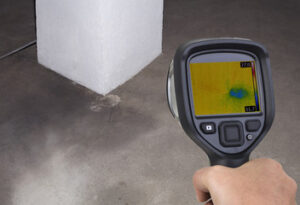Plumbing is a system of pipes, fixtures, and fittings that conveys water for drinking, heating, and waste removal. Plumbers Linden NJ install, maintain, and repair these systems in homes and businesses. They also provide a range of other services, including drain cleaning and water heater maintenance.

Many plumbers work in construction sites. They may be responsible for laying out piping according to building plans and specifications. They may also be responsible for installing appliances and fixtures.
Faucets are machines that get water from pipes in the ground through your house and into your sink. They also hold back water to prevent overflowing. But they can become leaky or damaged over time. If this happens, it is important to repair them as soon as possible. This will save you money on your water bill and help the environment. You can easily find faucet parts at your local hardware store or online. In addition, you can call the manufacturer directly to ask for replacement parts.
The first step to repairing a leaking faucet is to shut off the water supply. Next, remove the handle held to the main body of the faucet by unscrewing the tiny screw at the top or back of the handle. If the screw is stuck, try using penetrating oil such as WD-40 to loosen it.
Once the screw is removed, use a wrench to loosen the packing nut on the end of the stem. After that, pull the stem out. If the spout is pitted or worn, replace it with a new one. Then remove the rubber washer from the bottom of the stem and replace it with a new one, being sure to coat it with nontoxic plumber’s grease. Finally, reassemble the faucet, reversing the order it was disassembled.
If the faucet still leaks, it may be caused by a valve seat that is pitted or worn. The pitting can be the result of hard water or corrosion. This can be difficult to diagnose, but a plumber can help you solve the problem quickly.
Faucets come in a variety of styles. Some have a straight, low-profile spout that is useful for reaching deep pots and other large containers. Others have a gooseneck or shepherd’s crook design, which adds a decorative touch to the faucet. There are even articulating spouts that have multiple joints and allow you to direct the flow of water where it’s needed.
Faucets are made from a variety of materials, but brass is the most common. It is an alloy of copper and zinc that is resistant to soft-water corrosion and hard-water calcification. The finished faucet is then plated with a clear polymer coating to improve durability and is heat-cured in an environmentally controlled atmosphere. During this process, the faucet is tested for critical dimensions and durability.
Faucets are a device
A faucet is a device that controls the flow of water, whether hot or cold. It is usually attached to a sink or tub and can be operated by hand or with a lever. Some have a single handle that can be moved up and down to control the pressure and left or right to adjust the temperature. A faucet can also be used to supply water to a lawn or garden. It is also known as a tap, spigot, or water fountain.
Faucets are made of a variety of materials, from brass to plastic. They are fabricated through machining, forging, and finishing processes to achieve their appearance and functionality. They are available in many styles and colors, with ergonomic designs incorporating longer spout lengths and easier to operate handles.
One of the most common problems with a faucet is a leak. This is often caused by a worn-out O-ring or a corroded valve seat. If you notice that your faucet is leaking, shut off the water supply and turn off the faucet so that it can drain. Then, you can inspect the valve seat and O-ring for damage. If the O-ring is worn out, replace it with a new one. If the valve seat is corroded, you will need to replace it.
Another common problem with a faucet is an insufficient amount of pressure. This can be due to a low water tank, low water pressure in the house, or a faulty water meter. A plumber can diagnose the problem and recommend a solution.
When purchasing a faucet, it is important to consider not only its color and finish, but its operation and how it mixes the hot and cold water lines. This will affect the quality of your water and how easy it is to maintain. It is also helpful to know the terminology used in the industry, as this will help you understand what you are buying and the kinds of repairs or parts that may be needed over time.
There are hundreds of different faucet types, so you’ll need to determine what kind of faucet you have before you can repair it. If you’re unsure, you can visit a local hardware store that carries plumbing supplies. The salespeople at these stores can be impatient with do-it-yourselfers, but they can also save you a lot of time and trouble. They can point you in the direction of a repair kit that will fit your faucet. You can also try to find the type of faucet on your own by examining the handle. Look for a small screw slot or a decorative cap that conceals the set screw. Once you’ve found the correct replacement, replace it and install the handle, ensuring that everything is properly aligned and seated.
Faucets are a money faucet
Faucets are an essential part of your home’s plumbing system. They allow you to control the flow of water and can also be used to add a decorative touch to your kitchen or bathroom. Over time, faucets can start to wear out and need to be repaired. A dripping faucet can generate additional water bills and waste money. Even the smallest leak can waste $20 a month or more. If you have a leaking faucet, you should have it repaired right away.
The most common cause of a dripping faucet is a worn-out washer or o-ring. These parts are usually made of rubber and can dry out or stretch over time. If the problem persists, you may need to replace the entire cartridge or valve seat. You should also consider replacing the sink or counter surface if it is damaged.
If you’re looking for an easy way to update the look of your kitchen or bathroom, consider replacing your old faucets with new ones. This will instantly improve the appearance of your home and can save you money on your utility bills. It’s important to keep in mind that some types of faucets are more durable than others, so you should choose the type of faucet that is best for your needs.
Before you can start working on the faucet, it’s important to shut off your water supply. Then, remove the handle or knob to get access to the inner workings. After that, you can dismantle the faucet and clean everything, including the inner hoses, ball valve, cam, packing, and more. This is a good idea, because dirt can be the root of your faucet problems. After you’ve cleaned the components, you can reassemble and reattach them to the pipe.
You can purchase replacement parts for your faucet online or at a local hardware store. The most common parts are rubber washers and o-rings, which are inexpensive and easy to install. A faulty cartridge or stem, however, can be much more expensive and difficult to fix. A dripping faucet can waste water, which isn’t just a nuisance for you – it’s also an insult to 790 million people who don’t have access to an efficient water supply.
Faucets are a regular faucet
Faucets are an important part of your home’s plumbing system. Not only do they allow you to control the flow of water, but they also help in keeping your house clean and sanitary. However, if you’re experiencing problems with your faucets, it may be time to consider replacing them or hiring a plumber for repairs.
Whether you need to repair or replace your faucets, it’s important to hire a professional plumber to do the job right. A good plumber will have experience with different faucet types and can make sure your new faucets are installed properly. In addition, they will have the proper tools to handle the job quickly and efficiently.
One of the most common causes of faucet leaking is worn washers. These are used to create a seal between the valve seat and the handle, but can wear down after long periods of use. Many manufacturers have redesigned washers to reduce the rate at which they wear down and break, but they will still need replacement over time. Another common cause of leaks is the leaking spout. This occurs when the water supply line is not fully connected to the faucet or if the spout is too far from the sink.
To ensure that your faucet is safe, it should be NSF Certified. The process involves submitting a list of all materials used, as well as undergoing an NSF inspection. The inspection includes a review of the manufacturing processes, water testing, and other details. It is an excellent way to find out if your faucet is safe for use in your home.
The design of a faucet is an important factor in its function and aesthetic appeal. A variety of styles and finishes are available, and some offer additional features like anti-scald technology. It is important to choose a faucet that fits your home’s style and budget, and will complement other fixtures in your bathroom.
The most popular type of faucet is a three-hole basin set with separate handles and a spout base. This type of faucet has several advantages over single-hole sets, including greater flexibility in the placement of the spout and more room for sink designs. The three-hole model is more expensive than the two-hole version, but it’s worth the investment if you want a faucet with more style options.


